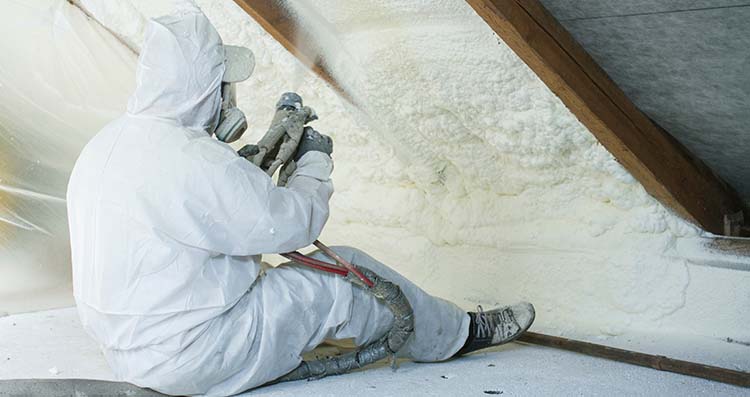Safe use of diisocyanates in 5 questions
Diisocyanates are found in many products. But its use is not without risk. A quick guide on the safe use of diisocyanates in the workplace in 5 questions.
1. What are diisocyanates?
Diisocyanates are a family of highly reactive chemicals. These chemicals are widely used in the production of polyurethane products – also known as PU products.
PU products have different uses. Insulating foam is perhaps the best known, but glues, fibres, and coatings, such as paints and varnishes also contain diisocyanates. PU products are used especially in the automotive and construction industries.

2. What are the safety risk?
Diisocyanates are strong irritants affecting the lungs, mucous membranes of the eyes, and gastrointestinal tract.
There is a particular risk of sensitisation: if an employee comes into contact with the substance, they may suddenly become allergic to it after a particular period of time. Severe allergic reactions and respiratory problems may occur with subsequent exposure.
These are the most common health risks:
- Occupational asthma
- Shortness of breath
- Lung disease
- COPD(Chronic Obstructive Pulmonary Disease, a chronic lung disease characterised by narrowing of the airways and lung damage)
- Allergic (skin) reactions, such as eczema
- Eye and respiratory tract irritations
- Swollen limbs

3. How do you measure diisocyanates?
There are different types of diisocyanates, all of which have their own limit values. The exposure level can be measured by a prevention adviser or occupational health specialist.
4. What preventative measures are used?
To begin with, consider using materials that do not contain diisocyanates. If this is not an option, the risk analysis – possibly supported by the measurement results – determines which preventative measures are required.
- Technical measures: provide active measures, such as enclosed spray booths where staff do not come into contact with the diisocyanates. Also ensure that there is sufficient ventilation and a mechanical extraction system that is properly maintained.
- Organisational measures: ensure there isjob rotation for work activities where staff are exposed.
- Personal protective equipment: such as, gloves, protective clothing, and respiratory protection.
- Training: provide staff training on the risks and necessary preventative measures.

5. Training will be required starting when?
The European Union has decided that industrial and professional users must undergo training to increase the safe use of diisocyanates in the workplace. As of 24 August 2023, only trained staff may work with diisocyanates. You can take the training either online or classroom at Safe Use and Handling of Diisocyanates Training.
Protect staff from chemicals
Contact our experts through the form below and find out how we can help you.